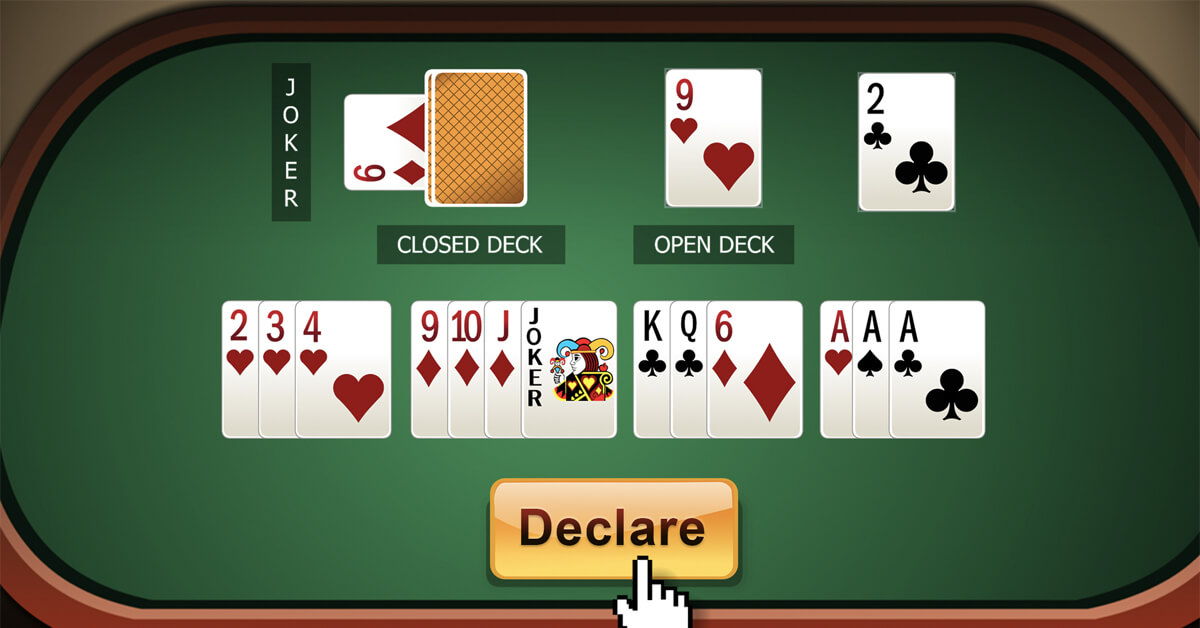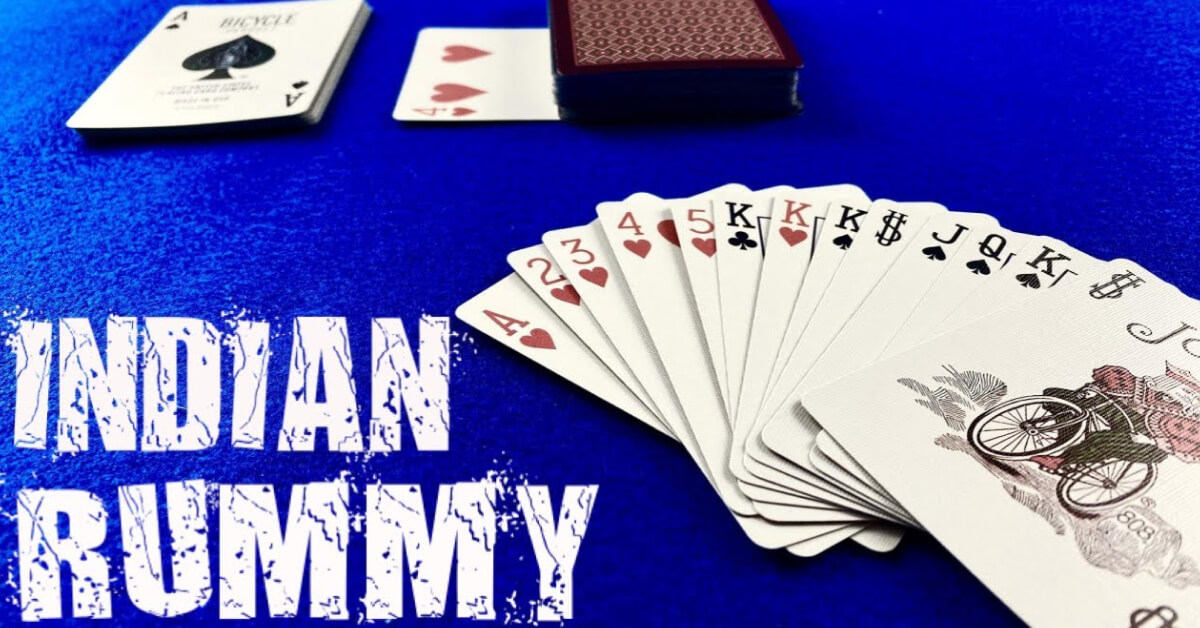Rummy is a popular card game played around the world, especially in India and other South Asian countries. It is a game of skill and strategy that requires players to form sets and sequences of cards, and to discard unwanted cards to minimize their points.
How to Play
The game is played with a standard deck of 52 cards, and can be played by two to six players. The objective of the game is to form sets and sequences of cards in your hand, and to be the first player to get rid of all your cards.
A set is a group of three or four cards of the same rank, but different suits. For example, three jacks of different suits would form a set. A sequence is a group of three or more cards of the same suit, in consecutive order. For example, the 7, 8, and 9 of hearts would form a sequence.
At the beginning of the game, each player is dealt 13 cards. The remaining cards are placed face down on the table to form the stock pile, and the top card is turned over to start the discard pile.
On their turn, a player must draw either the top card from the stock pile or the top card from the discard pile. They can then form sets and sequences in their hand, and discard one card face up on top of the discard pile. The game continues in this way, with players taking turns to draw and discard cards, until one player has no cards left in their hand.
At this point, the game ends and players score points based on the cards remaining in their opponents’ hands. Face cards (Jacks, Queens, and Kings) are worth 10 points each, Aces are worth 1 point, and all other cards are worth their face value. The objective is to have the lowest possible score at the end of the game.
There are many variations of rummy, with different rules and scoring systems. In some versions, players are allowed to lay off cards onto existing sets and sequences on the table, while in others, players must complete their own sets and sequences before being allowed to lay off cards.
Rummy is a game that requires both luck and skill. Good players must be able to form sets and sequences quickly, but also know when to hold onto cards and when to discard them. They must also be able to predict their opponents’ moves and adjust their strategies accordingly.
In recent years, rummy has become a popular online game, with many websites and apps offering the game for free or for real money. This has made it easier for players to access the game from anywhere in the world, and has also increased the popularity of the game among younger players.
Type of Rummy
There are many variations of rummy, each with its own set of rules and scoring systems. Here are some of the most popular types of rummy:
1. Gin Rummy – In Gin Rummy, players try to form sets and sequences in their hand and get rid of all their cards before their opponent. The game is played with two players and uses a standard deck of 52 cards.
2. Indian Rummy – Indian Rummy is a popular variant of the game played in India and other South Asian countries. It is usually played with 2-6 players and uses two decks of cards. The game requires players to form sets and sequences, and to be the first player to get rid of all their cards.
3. Rummy 500 – Rummy 500 is a popular variant of the game played in the United States. It is usually played with two to eight players and uses a standard deck of 52 cards. The game requires players to form sets and sequences and to score points based on the cards remaining in their hand at the end of each round.
4. Canasta – Canasta is a popular variation of rummy that is usually played with four players. It uses two standard decks of 52 cards and requires players to form sets and sequences, as well as to accumulate points based on the cards they have collected.
5. Contract Rummy – Contract Rummy is a variation of the game that is played with 3-8 players. The game is played over seven rounds, with each round requiring players to form a specific combination of sets and sequences to win.

6. Oklahoma Gin – Oklahoma Gin is a variation of Gin Rummy that is popular in the United States. It is played with two players and uses a standard deck of 52 cards. In Oklahoma Gin, players can choose to knock instead of going gin (getting rid of all their cards), and they receive a bonus if the face-down card in the discard pile can be added to their hand.
7. Kalooki Rummy – Kalooki Rummy is a variation of the game that is popular in the Caribbean and the United Kingdom. It is usually played with two to four players and uses two decks of cards. In Kalooki Rummy, players are dealt 14 cards instead of 13, and there are different scoring systems for different types of sets and sequences.
8. Shanghai Rummy – Shanghai Rummy is a variation of Contract Rummy that is popular in the United States. It is usually played with three to eight players and uses two decks of cards. The game is played over 10 rounds, with each round requiring players to form a different combination of sets and sequences.
9. Liverpool Rummy – Liverpool Rummy is a variation of the game that is popular in the United Kingdom. It is usually played with three to eight players and uses two decks of cards. The game requires players to form specific combinations of sets and sequences, and to accumulate points based on the cards remaining in their hand at the end of each round.
10. Progressive Rummy – Progressive Rummy is a variation of the game that is played in multiple rounds, with each round requiring players to form different combinations of sets and sequences. The game is usually played with two to eight players and uses a standard deck of 52 cards.
How to Win
The strategies for winning at rummy vary depending on the specific type of rummy being played. However, here are some general tips that can increase your chances of winning:

1. Focus on forming sets and sequences: In most types of rummy, the primary objective is to form sets and sequences of cards. Try to form these combinations as quickly as possible, as it will increase your chances of going out before your opponents.
2. Keep track of your opponent’s discards: Pay attention to the cards your opponents are discarding, as this can give you clues about the types of sets and sequences they are trying to form. This information can help you decide which cards to keep and which ones to discard.
3. Don’t hold on to too many high-value cards: High-value cards like Aces, Kings, Queens, and Jacks can be useful for forming sets and sequences, but they can also hurt your score if you are unable to use them. Try to get rid of these cards as soon as possible if you don’t have any use for them.
4. Discard strategically: When discarding cards, try to get rid of cards that are least likely to be useful to you or your opponents. For example, if you have two 8s and no other cards of that suit, it may be a good idea to discard one of the 8s, as it is less likely to be useful in forming a set or sequence.
5. Pay attention to your score: In many types of rummy, the score is based on the value of the cards remaining in your hand at the end of each round. Try to keep your score as low as possible by getting rid of high-value cards and forming sets and sequences.
Also See: Tricks to Win an Online Rummy Game
Money Management
Money management is an important aspect of playing rummy, particularly when playing for real money. Here are some tips for managing your money while playing rummy:
1. Set a budget: Before you start playing, decide how much money you are willing to risk. This can help you avoid spending more than you can afford to lose.
2. Manage your bankroll: Your bankroll is the total amount of money you have available to play rummy. Try to manage your bankroll carefully by setting limits on how much you will bet in each game and by adjusting your bets based on how your bankroll is doing.
3. Don’t chase losses: If you have a losing streak, it can be tempting to try to win back your losses by betting more money. However, this is usually not a good strategy, as it can lead to even bigger losses. Instead, take a break and come back to the game later.
4. Play within your limits: It’s important to choose games that are appropriate for your skill level and bankroll. Don’t play in games with high stakes if you are not comfortable with the risks involved.
5. Take advantage of bonuses and promotions: Many online rummy sites offer bonuses and promotions that can help you stretch your bankroll. Be sure to take advantage of these offers whenever possible.
6. Know when to quit: It’s important to set limits on how much time and money you will spend playing rummy. If you have been playing for a long time or if you have lost a significant amount of money, it may be time to take a break and come back to the game later.
7. Avoid distractions: When playing rummy, it’s important to focus on the game and avoid distractions like social media, television, or other games. Distractions can lead to poor decision-making and can result in unnecessary losses.
8. Keep track of your winnings and losses: It’s important to keep track of how much money you are winning and losing while playing rummy. This can help you identify patterns in your gameplay and can help you make better decisions about how much money to bet.
9. Use a betting strategy: Many experienced rummy players use a betting strategy to manage their money. For example, some players will increase their bets when they have a strong hand, while others will decrease their bets when they are on a losing streak.
Play with responsible and trustworthy players: When playing for real money, it’s important to play with players who are responsible and trustworthy. This can help ensure that the game is fair and that your money is safe.
In conclusion, rummy is a fun and challenging card game that can be enjoyed by players of all ages. Whether you’re playing with friends and family at home or competing against players online, rummy is a great way to test your skill and strategy, and to have fun at the same time.




